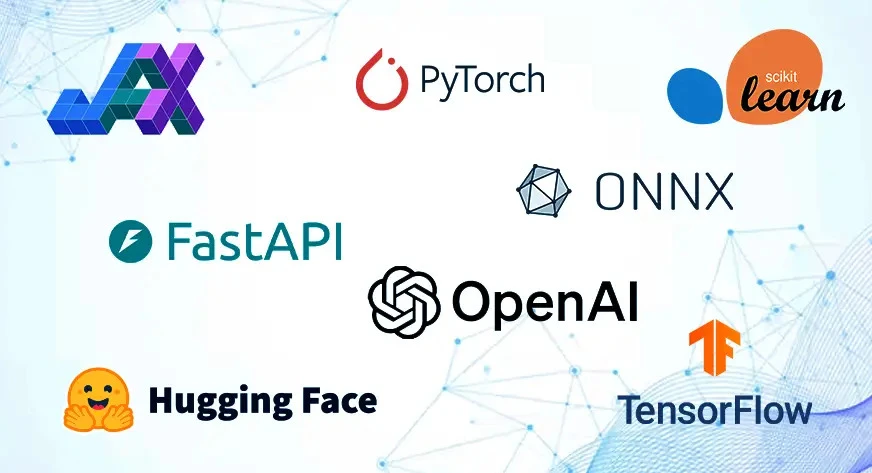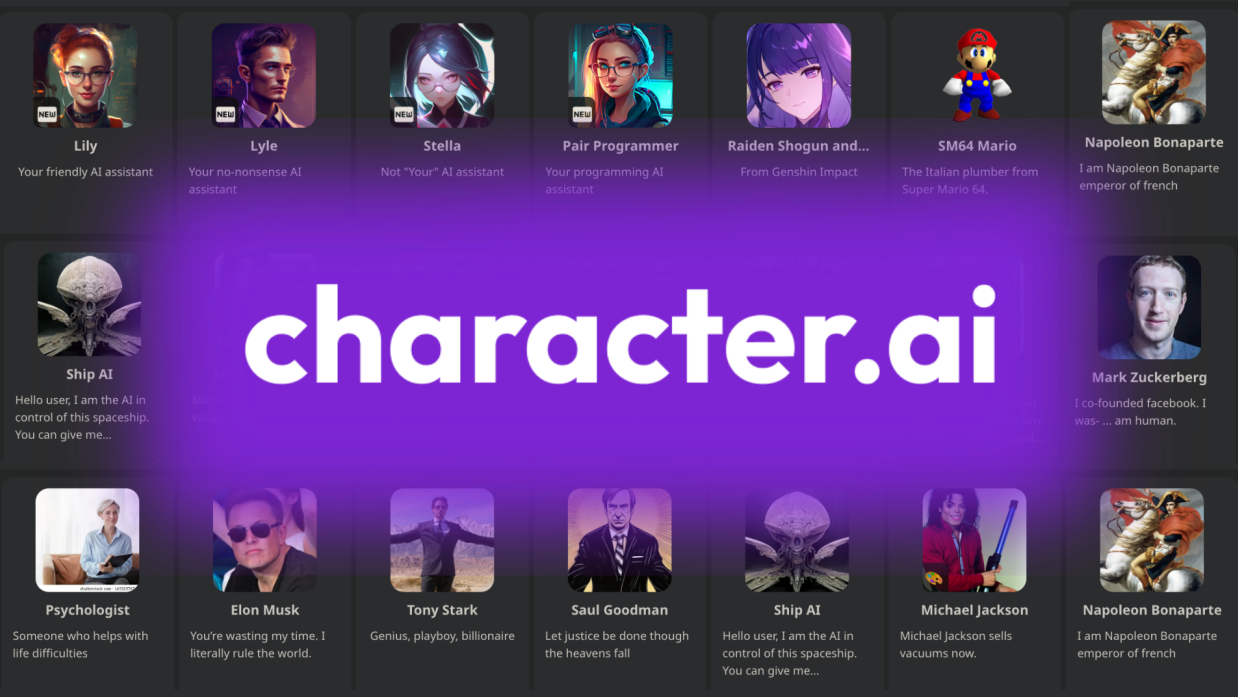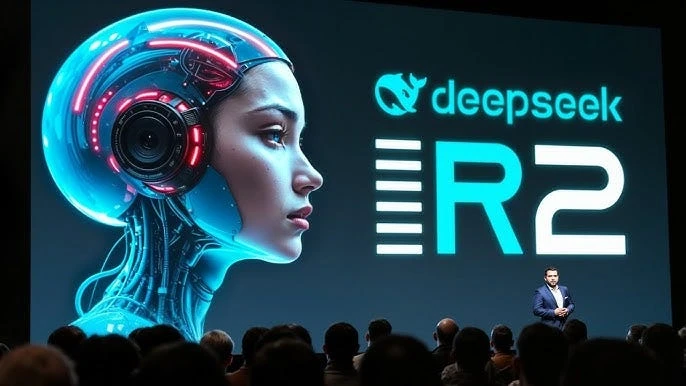Test AI on YOUR Website in 60 Seconds
See how our AI instantly analyzes your website and creates a personalized chatbot - without registration. Just enter your URL and watch it work!
Open-Source AI Platforms
Open-source AI platforms are not only cost-effective but also benefit from active developer communities that contribute to continuous improvement, enhanced performance, and broader feature sets. In this blog, we’ll explore 10 of the most powerful open-source AI platforms that are driving innovation across industries.
1. TensorFlow
TensorFlow, developed by Google Brain, is one of the most popular open-source AI platforms in the world. It’s widely used for building and training machine learning models, from simple linear regression to complex deep neural networks. TensorFlow supports a variety of platforms, including desktops, mobile devices, and cloud-based systems.
Key Features:
Comprehensive ecosystem for developing ML and AI models
TensorBoard for real-time visualization of model performance
Keras API for simplified model building
Support for CPUs, GPUs, and TPUs for scalable training
Use Cases:
Image recognition
Natural language processing (NLP)
Reinforcement learning
Predictive analytics
Example: Google Photos uses TensorFlow for image recognition and organization.
👉 GitHub: https://github.com/tensorflow/tensorflow
2. PyTorch
PyTorch, developed by Facebook AI Research (FAIR), is known for its ease of use and dynamic computation graph, which makes it highly flexible for research and production. It has gained massive popularity in the AI research community due to its Pythonic interface and strong support for GPUs.
Key Features:
Dynamic computation graphs for flexible model building
Strong GPU acceleration
TorchScript for transitioning from research to production
Extensive libraries for NLP, computer vision, and more
Use Cases:
Computer vision
Generative adversarial networks (GANs)
Natural language processing (NLP)
Time-series forecasting
Example: Tesla uses PyTorch for autonomous driving AI development.
👉 GitHub: https://github.com/pytorch/pytorch
3. Keras
Keras is an open-source deep learning library written in Python, originally developed as a user-friendly API for TensorFlow. It allows for quick prototyping of neural networks and simplifies the process of building and training models.
Key Features:
Simple and consistent interface for neural networks
Runs on top of TensorFlow, Theano, or CNTK
Modular design for easy customization
Built-in support for convolutional and recurrent networks
Use Cases:
Image classification
Speech recognition
Recurrent neural networks (RNNs)
Example: NASA has used Keras to classify satellite data.
👉 GitHub: https://github.com/keras-team/keras
4. Scikit-Learn
Scikit-Learn is a widely used open-source machine learning library built on top of NumPy, SciPy, and Matplotlib. It provides simple and efficient tools for data mining and analysis and is particularly effective for traditional machine learning models.
Key Features:
Simple and consistent API for machine learning models
Pre-built models for classification, regression, and clustering
Tools for dimensionality reduction and feature selection
Strong support for data preprocessing
Use Cases:
Customer segmentation
Fraud detection
Predictive modeling
Example: Spotify uses Scikit-Learn for music recommendation algorithms.
👉 GitHub: https://github.com/scikit-learn/scikit-learn
Test AI on YOUR Website in 60 Seconds
See how our AI instantly analyzes your website and creates a personalized chatbot - without registration. Just enter your URL and watch it work!
5. Hugging Face Transformers
Hugging Face has become the go-to platform for NLP models. Their open-source Transformers library provides state-of-the-art pre-trained models for text generation, sentiment analysis, translation, and more.
Key Features:
Pre-trained models (BERT, GPT, etc.)
Easy-to-use API for training and fine-tuning
Supports both TensorFlow and PyTorch
Multilingual support
Use Cases:
Chatbots
Language translation
Text summarization
Sentiment analysis
Example: Microsoft uses Hugging Face Transformers for customer service automation.
👉 GitHub: https://github.com/huggingface/transformers
6. OpenCV
OpenCV (Open Source Computer Vision Library) is one of the most popular platforms for computer vision and image processing. It offers a large number of algorithms for real-time image and video processing.
Key Features:
Real-time image and video analysis
Multi-language support (Python, C++, Java)
Pre-built algorithms for face detection, object tracking, etc.
GPU support for fast processing
Use Cases:
Facial recognition
Object detection
Motion tracking
Augmented reality
Example: Snapchat uses OpenCV for face filters and AR features.
👉 GitHub: https://github.com/opencv/opencv
7. MLflow
MLflow is an open-source platform for managing the complete machine learning lifecycle, including model tracking, versioning, and deployment. It’s highly effective for building reproducible ML pipelines.
Key Features:
Model tracking and versioning
Experimentation and reproducibility tools
Integration with TensorFlow, PyTorch, Scikit-Learn, and more
Easy deployment to production
Use Cases:
Machine learning experiment tracking
Model deployment and monitoring
Example: Airbnb uses MLflow to manage and deploy machine learning models.
👉 GitHub: https://github.com/mlflow/mlflow
8. Apache MXNet
Apache MXNet is a deep learning framework designed for high performance and scalability. It supports both symbolic and imperative programming, making it suitable for production use.
Key Features:
Scalable across multiple GPUs and cloud services
Native support for multiple programming languages
Efficient memory usage
Use Cases:
Deep learning for large datasets
Image recognition and classification
👉 GitHub: https://github.com/apache/mxnet
9. Fast.ai / Ray
Best for: Simplified deep learning models
Fast.ai is a high-level deep learning library built on PyTorch. It’s designed to simplify complex deep learning models for non-experts.
Key Features:
Intuitive and easy to use
Pre-trained models for transfer learning
Optimized for real-world applications
👉 GitHub: https://github.com/fastai/fastai
Ray
Best for: Scalable AI applications
Ray is an open-source framework for building and deploying scalable AI and machine learning applications.
Key Features:
Distributed processing for large-scale models
Integration with TensorFlow, PyTorch, and more
Scalable reinforcement learning
👉 GitHub: https://github.com/ray-project/ray
Open-source AI platforms empower businesses and developers to innovate faster and more efficiently. Whether you’re building machine learning models, training neural networks, or automating data analysis, these platforms provide the tools and flexibility needed to stay ahead of the competition.






